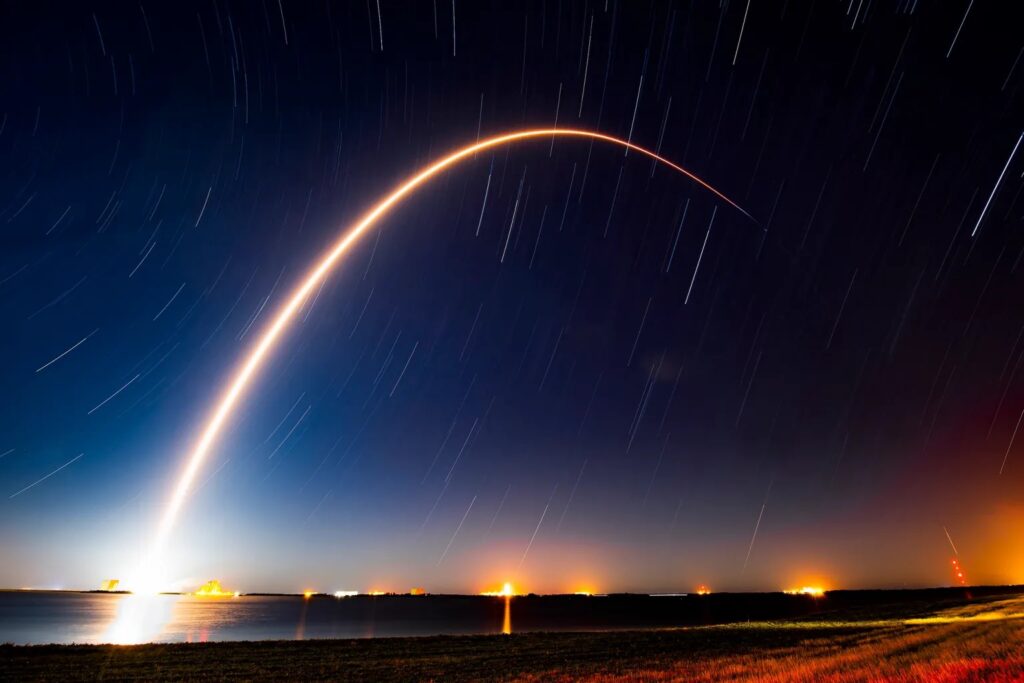SpaceX ended an 11-day hiatus in launches late Dec. 18 with a successful Starlink mission, but the gap likely means the company will fall just short of its goal of 100 Falcon launches this year.
A Falcon 9 lifted off from Space Launch Complex 49 at Cape Canaveral Space Force Station in Florida at 11:01 p.m. Eastern. The rocket deployed its payload of 23 Starlink “v2 mini” satellites into orbit a little more than an hour later.
The launch was the first for SpaceX since a Falcon 9 launch of another set of Starlink satellites early Dec. 8 from Vandenberg Space Force Base in California. The gap of almost 11 days between launches is the longest for the company this year. SpaceX has averaged about four days between launches in 2023.
Several factors contributed to the gap in launches. Poor weather conditions in Florida delayed the latest Starlink launch from last week. A Falcon Heavy launch of the Space Force’s X-37B spaceplane from Launch Complex 39A at the Kennedy Space Center was scrubbed Dec. 11 because of a ground equipment issue, but has since been delayed to no earlier than Dec. 28, reportedly because of issues with the rocket.
SpaceX had scheduled a Falcon 9 launch from Vandenberg carrying Starlink satellites for Dec. 14, then delayed it a day before pushing it back again to Dec. 28. SpaceX did not disclose the reason for the extended delay, but is believed to free up a launch opportunity for the German SARah 2 and 3 radar imaging satellites as soon as Dec. 21.
The combination of factors means SpaceX will likely fall just short of a goal set earlier this year of 100 Falcon launches. The company has now conducted 92 launches — 88 of the Falcon 9 and 4 of the Falcon Heavy — so far this year. In addition to the X-37B, Starlink and SARah launches, SpaceX is expected to attempt one more Starlink launch from Florida as well as the launch of the Ovzon-3 communications satellite. All those launches would bring SpaceX’s total for the year to 97.
Even before the recent gap, a SpaceX executive said getting to 100 would have been a stretch. “100 is very much on the table, but it will take excellent execution, relentless focus on safety and reliability, and a little luck with the weather!” said Kiko Dontchev, vice president of launch, in a Dec. 4 social media post.
Despite missing the goal, the company’s launch cadence has been a significant achievement compared both to its past activity as well as global competitors. SpaceX launches increased by more than 50% from 2022 and are triple what it performed in 2021.
SpaceX accounts for nearly half of the 209 orbital launch attempts so far in 2023, 200 of which were successful. (Those figures do not include two Starship launches in April and November that, even if completely successful, would not have achieved orbit.) Among American companies, SpaceX has performed more the nine times as many launches this year as the second most active company, Rocket Lab, which recently flew its tenth Electron rocket of 2023.
SpaceX expects to continue increasing its launch cadence into 2024. In testimony to a Senate space subcommittee Oct. 18, Bill Gerstenmaier, vice president of build and flight reliability at SpaceX, said the company was planning to conduct 144 launches — 12 per month — in 2024.
Credit: SpaceNews



